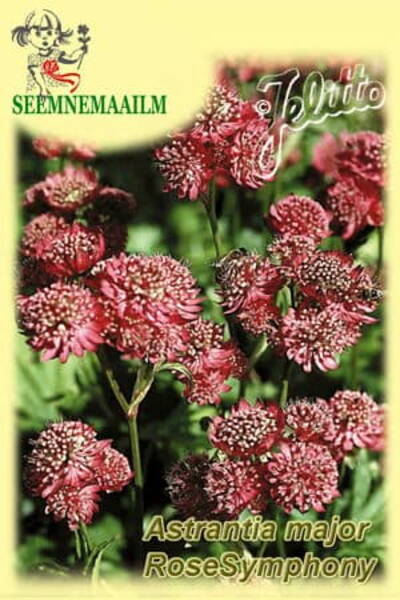Family: Apiaceae, Umbelliferae.
Origin: Europe.
Special Features: A symphony of branched, wiry flowering stems with claret, red to pink colours.
Colour: Shades of red to pink.
Natural Flowering Period: June - August.
Winter Hardiness Zones: Z5-7.
Growth Habit: Clump-forming; 2-3 years to establish. Foliage: Attractive divided, basal foliage.
Height with Flower: 75 cm.
Spacing between Plants: 60 cm.
Soil Requirement: Any good, moist garden soils, pH 5.8 - 6.5.
Location: Full sun to partial shade in warmer climates.
Use: An outstanding border plant which can be planted to beautiful effect with Bergenia cordifolia "Winterglut", Milium effusum "Aureum" and Salvia lyrata "Purple Knockout".
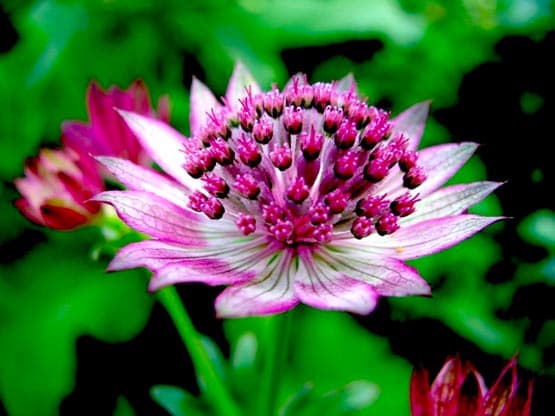
Specialities: Outstanding cut flowers.
Cultural Tips: Grams per 1000 seeds: 3,333 Seeds per Gram: 300.
Seeding Recommendation: 10 g / 1000 plants.
Sowing Rate: 3 seeds per cell.
Plug tray recommended size(s): open flats.
Germination: The sowing must be kept warm (about +18 to 22°C) and moist for the first 2-4 weeks. After this period the sowing must be kept at a cold temperature (between -4 and +4°C) for another 4-6 weeks. It is not so important if the temperature is higher or lower during the cooling period, but the cooling period has to be prolonged because the synthesis of the germination inducer, hormonelike acid, slows down or comes to a standstill. It is beneficial to cover the sowing with snow during the cooling period. The temperature below it usually keeps in the optimum range of -4 to 0°C. The sowing is kept moist, and the melting snow helps to destroy the shell, which is advantageous for germinating seedlings. After this cooling-period, the sowing may not be immediately exposed to high temperatures. The most effective temperatures are between +5 to 12°C, even if germination has started. The best location for this sowing, even in March, April and May, is the open field, the cold frame or a cold greenhouse.
Scheduling:
Best Sowing Dates: November - March
Sowing to Germination: 8 - 10 weeks
Germination to Transplant: 4 - 8 weeks
Transplanting to Salable Plant: 6 - 10 weeks
Cutting-Back at Transplanting: cut back once to keep more compact
Growing On: Container Size(s): 1-2 plugs per 11/12 cm; 2-3 plugs per 15 cm.
Vernalization: There is no current research on vernalization but a prudent recommendation for any perennial would be 6-12 weeks (a few might need 15 weeks!) at an average daily temperature of 5°C.
Exposure to cold may not be necessary for flowering but might improve quality.
Forcing: An obvious place to experiment - following vernalization - would be raising daytime temperatures to 15° - 17°C. Provide 16 hours of continuous lighting. During the short days of winter, provide a night interruption lighting of 4 hours between 10:00 p.m. and 2:00 a.m.
Fertilization: Medium (150-200 ppm).
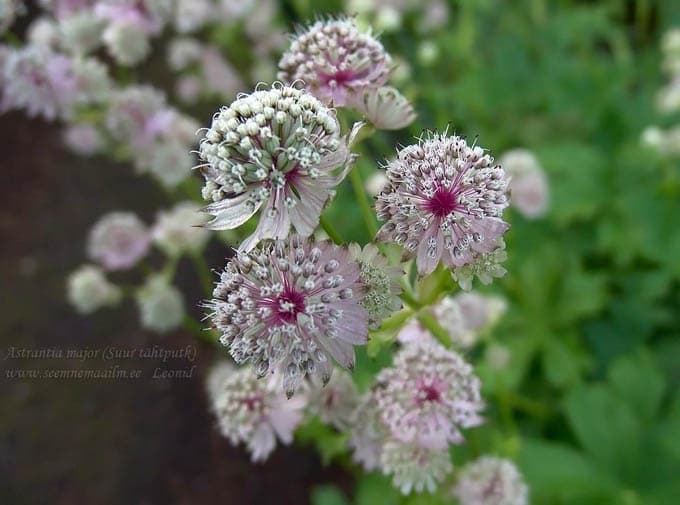
Hardy Herbaceous Perennial. Flowers: Summer. Height: 36 inches. Position: Sun or Partial Shade. Ideal For: Border, Cut Flower. Germination: Experience Useful. Aftercare: Easy. Description: Silver to rose cushions of flowers, surrounded by a stiff ruff of ray-like bracts of a similar hue. Excellent colour foil. Very long-lasting when cut. Sowing Instructions: Sow in trays, pots, etc of good seed compost in a propagator or warm place to maintain an optimum temperature of 15-18 C. Surface sow and do not exclude light. Sowing Time: February to July. Germination can be slow. After sowing, seal еру container in a polythene bag and leave at 15-18 C for 2 weeks, then place in a refrigerator (not freezer) for 3-6 weeks. After this return to the recommended germination temperature. If germination does not occur in 6-10 weeks return to the fridge for a further 3-6 weeks. Examine regularly whilst in the fridge and remove immediately if the seeds show signs of germinating. Growing Instructions: Transplant seedlings when large enough to handle into 7.5 cm pots. Acclimatise young plants to outdoor conditions before planting out 30 cm apart in full sun or part shade. Prefers moist, well-drained soil.
Potting of astrantia.
Grow Masterwort in any fertile, well-drained soil in a sunny place.
Propagation of astrantia.
Seeds may be sown in containers of light soil in a frame in the spring. They may also be divided in October or March and replanted.
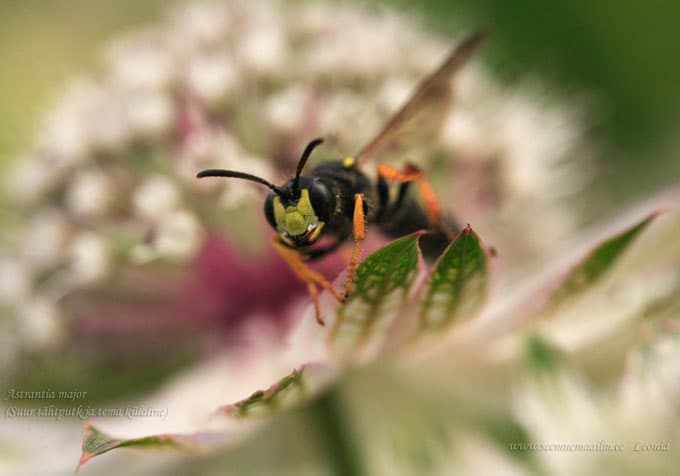
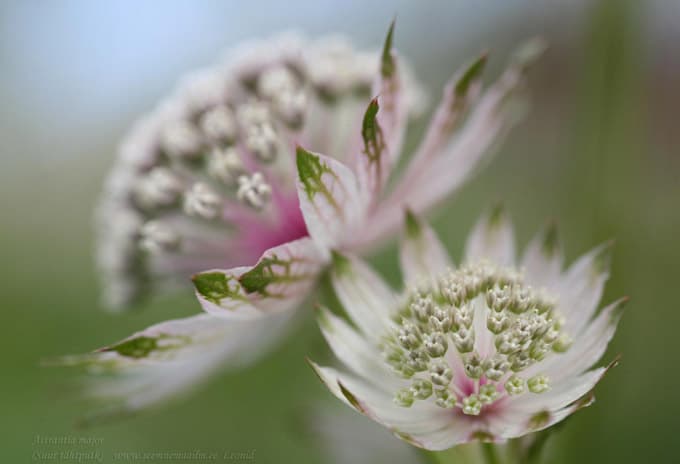
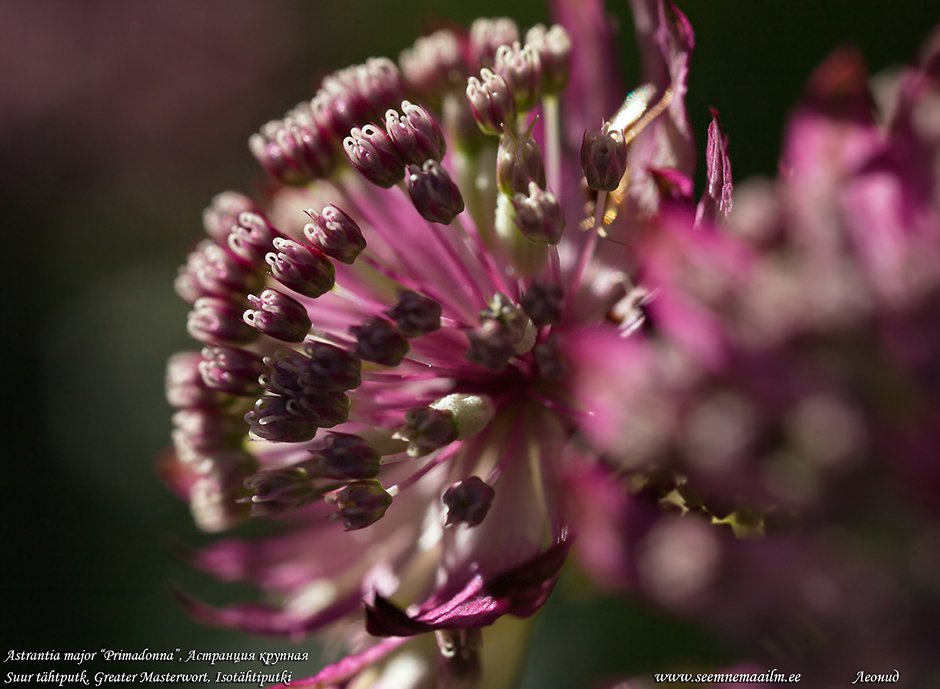
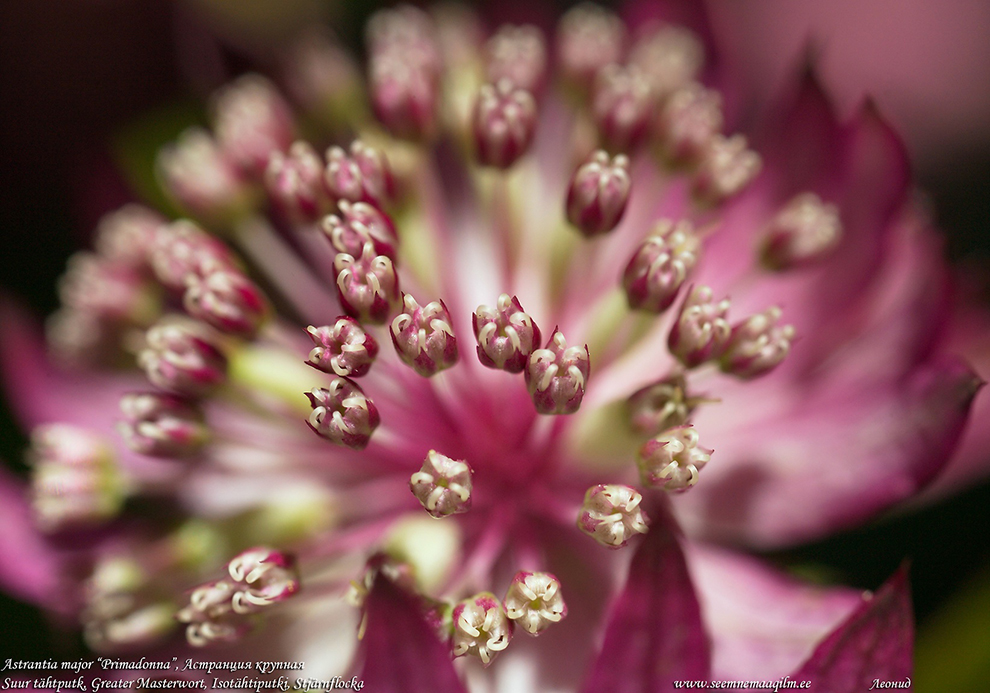
Great Masterwort.






